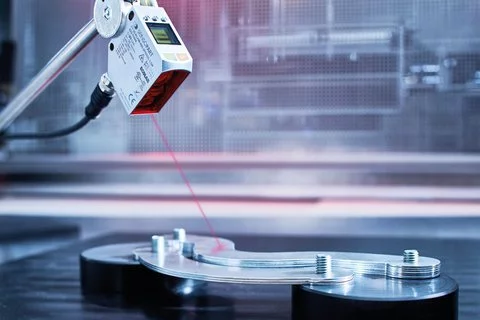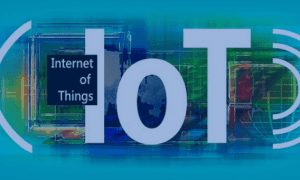Optical sensors are a category of devices that convert light or optical signals into electrical signals for the purpose of measuring or detecting various physical quantities. They play a crucial role in numerous fields, including industrial automation, medical diagnostics, environmental monitoring, and consumer electronics.
Optical Sensors
Working Principle
The fundamental working principle of optical sensors is based on the interaction of light with the physical properties of materials. When light interacts with an object or medium, its characteristics such as intensity, wavelength, polarization, or phase may change. Optical sensors are designed to detect these changes and convert them into measurable electrical signals.
For example, in a simple photoresistor-based optical sensor, the resistance of the photoresistor changes in response to the amount of light it receives. When light shines on the photoresistor, its resistance decreases, allowing more current to flow through a circuit. This change in current can be measured and processed to determine the intensity of the light.
Types of Optical Sensors
Photodetectors
Photodetectors are a broad class of optical sensors that convert light into electrical current or voltage. They can be categorized into several types, including photodiodes, phototransistors, and photomultiplier tubes.
Photodiodes are semiconductor devices that generate a current proportional to the amount of light they receive. They are widely used in applications such as light detection and ranging (LIDAR), fiber optic communications, and medical imaging. Phototransistors, on the other hand, amplify the light-induced current, making them more sensitive than photodiodes. They are commonly used in optoelectronic devices like remote controls and light sensors. Photomultiplier tubes are highly sensitive detectors that can amplify even the weakest light signals. They are often used in scientific research, such as detecting low-intensity light in fluorescence spectroscopy.
Fiber Optic Sensors
Fiber optic sensors utilize optical fibers to transmit light and detect changes in the light’s properties. These sensors are highly versatile and can measure a wide range of physical quantities, including temperature, pressure, strain, and displacement.
One common type of fiber optic sensor is the fiber Bragg grating (FBG) sensor. FBG sensors are based on the reflection of specific wavelengths of light from a periodic variation in the refractive index of the fiber. When the fiber is subjected to strain or temperature changes, the spacing of the grating changes, causing a shift in the reflected wavelength. By measuring this wavelength shift, the sensor can determine the amount of strain or temperature change.
Image Sensors
Image sensors are optical sensors that capture and convert light into digital images. They are the core components of digital cameras, smartphones, and other imaging devices. The two main types of image sensors are charge-coupled devices (CCDs) and complementary metal-oxide-semiconductor (CMOS) sensors.
CCD sensors are known for their high image quality and low noise, making them suitable for professional photography and scientific imaging. However, they are relatively expensive and consume more power. CMOS sensors, on the other hand, are more cost-effective and energy-efficient. They have become the dominant technology in consumer electronics, such as smartphones and digital cameras, due to their ability to integrate additional functions like image processing and control circuits on the same chip.
Applications
Industrial Automation
In industrial settings, optical sensors are used for a variety of tasks, such as quality control, object detection, and process monitoring. For example, in a manufacturing line, optical sensors can be used to inspect the dimensions and surface quality of products. They can detect defects, measure the thickness of materials, and ensure that components are assembled correctly.
Optical sensors are also employed in robotic vision systems, enabling robots to navigate and interact with their environment. By using cameras and other optical sensors, robots can recognize objects, determine their positions, and perform tasks such as picking and placing with high precision.
Medical Diagnostics
Optical sensors have revolutionized medical diagnostics by providing non-invasive and highly sensitive methods for detecting diseases and monitoring health conditions. In medical imaging, optical sensors are used in devices such as endoscopes, which allow doctors to visualize the inside of the body without invasive surgery. They are also used in fluorescence microscopy to study the structure and function of cells and tissues at the molecular level.
Optical sensors are also integrated into wearable devices for continuous health monitoring. For example, pulse oximeters use optical sensors to measure the oxygen saturation level in the blood by detecting the absorption of light by hemoglobin. Similarly, glucose sensors use optical methods to monitor blood sugar levels in diabetic patients.
Environmental Monitoring
Optical sensors play a vital role in environmental monitoring by detecting and measuring various pollutants, gases, and other environmental parameters. For instance, optical gas sensors can detect the presence of harmful gases such as carbon monoxide, methane, and sulfur dioxide in the atmosphere. These sensors work by measuring the absorption or scattering of light by gas molecules, allowing for the identification and quantification of specific gases.
Optical sensors are also used in water quality monitoring to detect contaminants such as heavy metals, organic compounds, and microorganisms. They can measure parameters like turbidity, color, and fluorescence, providing valuable information about the health of water bodies.
Consumer Electronics
In consumer electronics, optical sensors are used to enhance user experience and provide new functionalities. For example, smartphones are equipped with various optical sensors, including proximity sensors, ambient light sensors, and fingerprint sensors. Proximity sensors detect the presence of an object (such as a user’s face) near the phone, allowing the screen to turn off during a call to save power and prevent accidental touches.
Ambient light sensors adjust the screen brightness based on the surrounding light conditions, improving readability and battery life. Fingerprint sensors use optical methods to capture the unique patterns of a user’s fingerprint, providing a secure and convenient method for unlocking the phone.
Advantages and Challenges
Advantages
Optical sensors offer several advantages over other types of sensors. One of the main advantages is their high sensitivity and accuracy. They can detect even the slightest changes in light, allowing for precise measurements of various physical quantities. Additionally, optical sensors are non-invasive and non-contact, meaning they can measure without physically touching the object or medium being measured. This is particularly useful in applications where contact could cause damage or contamination.
Optical sensors also have the ability to operate over long distances. For example, fiber optic sensors can be used to monitor large structures such as bridges and pipelines, providing real-time information about their structural integrity. Furthermore, optical sensors are relatively immune to electromagnetic interference, making them suitable for use in environments with high electromagnetic noise.
Challenges
Despite their numerous advantages, optical sensors also face some challenges. One of the main challenges is the need for proper calibration and alignment. Optical sensors require precise alignment of optical components to ensure accurate measurements. Any misalignment or calibration errors can lead to significant inaccuracies in the sensor output.
Another challenge is the susceptibility of optical sensors to environmental factors such as dust, moisture, and temperature variations. These factors can affect the performance of the sensor by causing changes in the light path or the properties of the sensing elements. Therefore, optical sensors often require protective housings and environmental conditioning to ensure reliable operation.
Optical sensors can also be relatively expensive, especially for high-performance or specialized applications. The cost of components such as optical fibers, lenses, and detectors can add up, making optical sensors less cost-effective compared to some other types of sensors.
Future Developments
The future of optical sensors looks promising, with ongoing research and development aimed at overcoming existing challenges and expanding their applications. One area of research is the development of more compact and low-cost optical sensors. Advances in nanotechnology and microfabrication techniques are enabling the creation of miniaturized optical sensors that can be integrated into small devices and systems.
Another area of interest is the development of smart optical sensors that combine sensing capabilities with data processing and communication functions. These sensors can perform real-time data analysis and transmit the processed information wirelessly, enabling more efficient monitoring and control systems.
In addition, the integration of optical sensors with artificial intelligence and machine learning algorithms holds great potential for enhancing their performance and capabilities. By analyzing the large amounts of data generated by optical sensors, these algorithms can identify patterns and trends, leading to more accurate and intelligent sensing solutions.
In conclusion, optical sensors are versatile and powerful devices that have a wide range of applications in various fields. Their ability to convert light into electrical signals allows for the measurement and detection of numerous physical quantities with high sensitivity and accuracy. Despite some challenges, ongoing research and development are paving the way for more advanced and innovative optical sensing technologies, promising to further expand their impact and importance in the future.
Related Articles
Motion Sensors:Description,Components and Types































